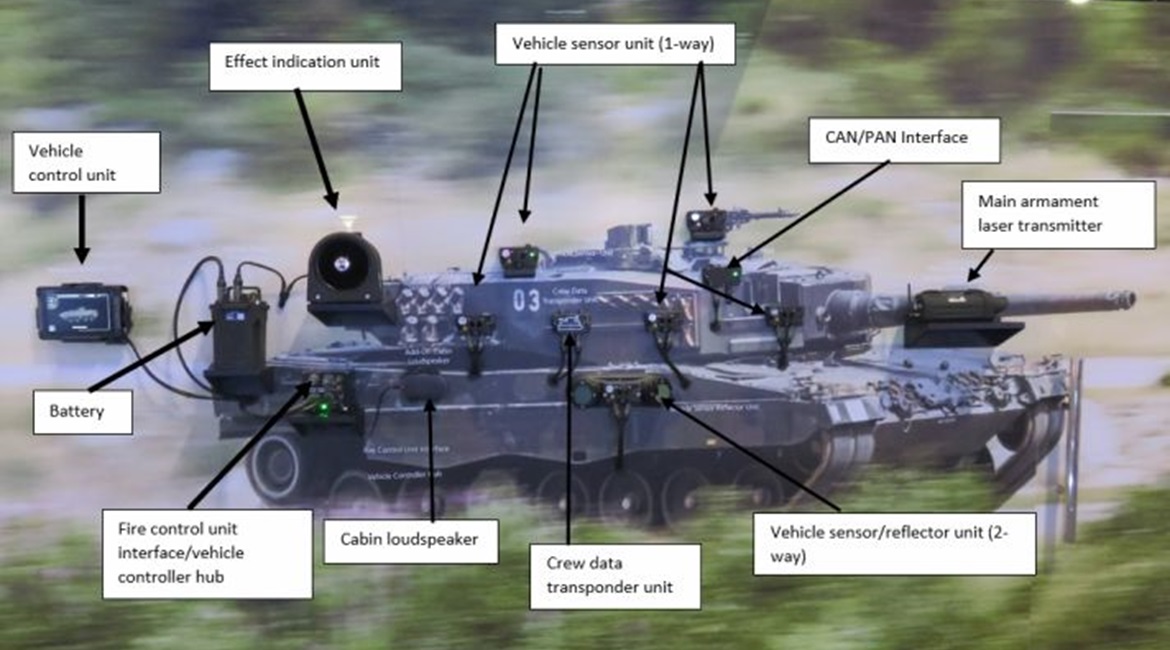
RUAG Simulation & Training (S&T) has completed development of its new Gladiator vehicle live simulation (VLS) equipment and showcased it at the 2019 Interservice/Industry Training, Simulation and Education Conference (I/ITSEC) in Orlando in December.
First revealed in prototype form at I/ITSEC the previous year, the system joins the personnel and dog harnesses, IED simulators, and combat training centre (CTC) communications and instrumentation in RUAG’s Gladiator tactical engagement simulation system (TESS) family of products.
The VLS was a COTS-based scalable and modular generic vehicle instrumentation system for use in TES systems, Rolf Gasser, senior product line manager for RUAG, told Jane’s . Its laser detectors provide multi-code simultaneous decoding and the system can be adjusted to reflect varying levels of protection and provide different vehicle identities to enable surrogate vehicles to be used for training.
There are both wired and wireless options for the external laser sensors and a mix of the two can be used. The wired sensors are converted to wireless by the addition of a battery and an antenna. One-way sensors are converted to two-way with a fitment providing additional reflectors. Hit indication is provided by an effect indicator unit consisting of a loudspeaker and flashing light, audible and visible at 400 m. The loudspeaker also provides main armament firing sound effects, and there is a small internal loudspeaker providing sound effects to the crew. Collateral damage to nearby dismounted troops is relayed through transmission of the appropriate effect to their harnesses.
The main gun laser transmitter is a new-generation two-way device that uses “completely new technology”, Gasser said. It has a range of up to 4 km, can be either wireless or wired, and is interoperable with one-way systems.

Looking to read the full article?
Gain unlimited access to Janes news and more...




